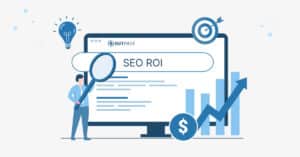A website is a great first step to attracting customers, but it’s not enough to guarantee online success. To attract and retain customers, your website needs SEO. SEO helps to optimize website content, structure, and layout to rank higher in SERPs. The higher a website’s ranking on SERPs, the more likely it is to receive organic traffic, leading to more potential customers and higher SEO ROI.
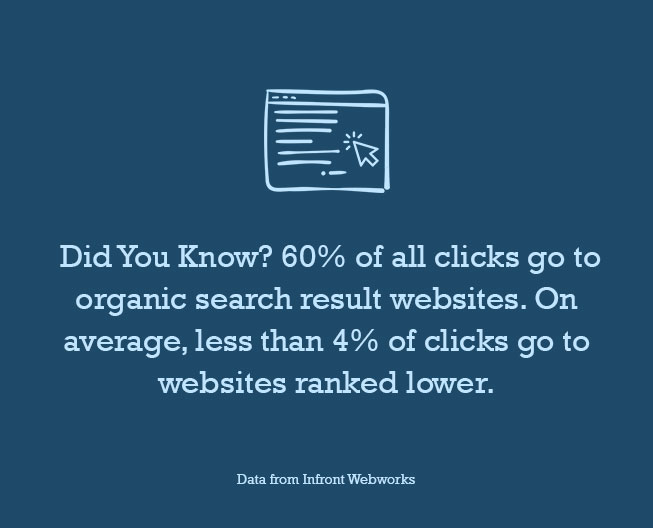
Businesses with a well-executed Search Engine Optimization strategy see an average ROI of 5:1. That’s a staggering 500% return on investment! Investing in SEO is key to increasing your long-term traffic, rankings, and revenue and staying ahead of the competition.
Let’s take a closer look at how SEO ROI can help you achieve your business goals.
Long-Term Impact Of SEO On Your Business’s ROI
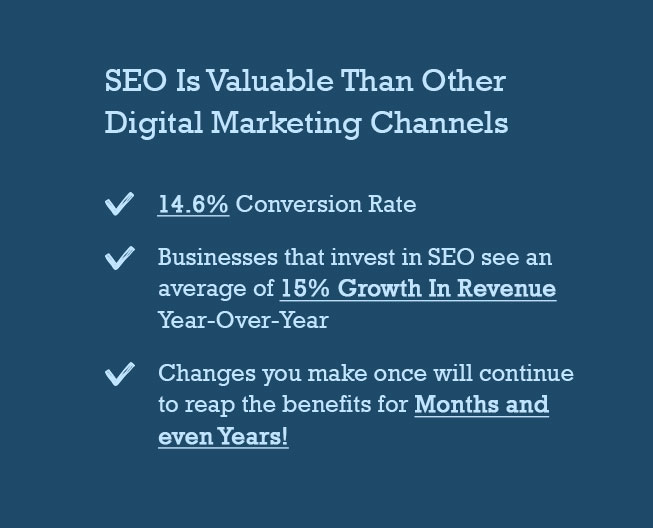
Businesses that invest in SEO reap long-term benefits through increased revenue.
BrightEdge found that the top result on Google’s organic search results page gets 31.7% of all clicks, resulting in an average ROI of 53.3%. This data means that for every dollar spent on SEO, businesses can expect to receive over five times their initial investment in revenue.
So what long-term impact does an SEO has on your business’s ROI?
A. Traffic, Traffic, and a lot of Traffic!
The long-term impact of SEO on a business’s ROI starts with increased traffic to its website.
Traffic refers to the number of people visiting your website, which is crucial to your business’s online success. The more traffic your site attracts, the higher your chances of converting visitors into customers.
According to Search Engine Journal, 93% of online experiences begin with a search engine, meaning potential customers actively search for products or services like your business offers.
With the help of SEO, your business can be at the top of the search results, where people can easily see and visit your website.
However, ranking on the first page of search engine results is not enough. Search results’ click-through rate (CTR) decreases as you move down the page.
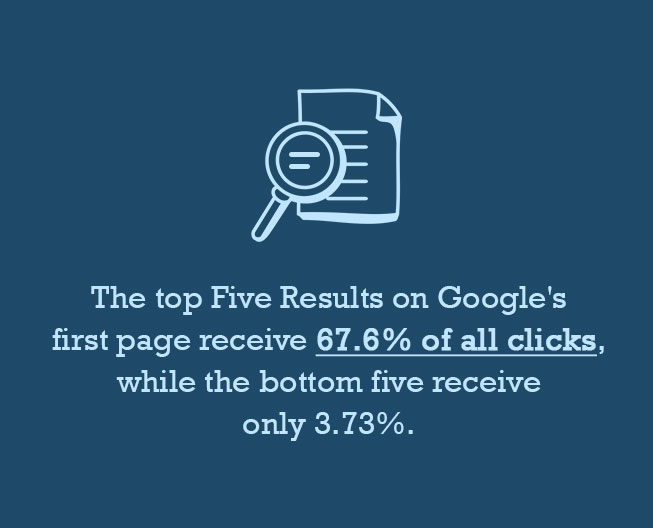
It is extremely crucial to focus on ranking on the first page and compete for that coveted top spot.
Remember: Traffic = Visitors (↑) = Potential Customers = Customers (↑) = SEO ROI (↑)
Moreover, people finding your website via search are already interested in your products or services, making them 8X more likely to convert into customers. In this case, SEO helps nudge your customers to commit to you!
B. Reach the Right Audience
SEO helps businesses to reach the right audience. Using relevant keywords and phrases, optimizing website content, and creating a user-friendly interface can help you get the right audience. By targeting specific demographics, businesses can increase their brand’s visibility among potential customers actively looking for their products and services.
For instance, a local coffee shop that appears on top of the search results for “coffee near me” will be more likely to attract foot traffic from people who want coffee in the area than a coffee shop that doesn’t come on the first page of the search. This targeted approach helps businesses increase their customer base and improve their conversion rate and ROI.
By consistently attracting the right visitors to your website, you can—
- Build a loyal customer base,
- Establish your brand as a trusted authority in your industry,
- Repeat business, referrals, and
- Overall customer lifetime value.
Remember: Right Audience + Right Message + Timing= SEO ROI (↑)
C. Improved User Experience
SEO strategies involve optimizing your website’s content, structure, and design to make it easier for search engines to crawl, index, and rank your pages. You can also navigate and interact with your site more easily.
When users land on your website, they expect to find what they’re looking for quickly and easily.
If they can’t find it, they’ll likely bounce back to the search results page and find a better alternative.
With SEO, you can ensure your site is easy to use and navigate, with clear calls to action and relevant content that answers user queries. This improved user experience leads to better site engagement, higher conversion rates, and repeat visits.
Remember: Positive User Experience = Bounce Rate (↓)+ Page Visits (↑) + Time Spent On Website (↑) = Website’s Relevance (↑) + Ranking (↑) = Traffic = Conversions = SEO ROI
If users find what they’re looking for and have a positive experience, they’re more likely to convert into customers and return for more. This conversion, in turn, drives up your revenue and ROI in the long run.
D. Decrease in Customer Churn
Churn, which refers to customers leaving a company, is a common problem many businesses face. High churn rates can hurt a business’s revenue and profitability, losing existing customers, who are more likely to purchase from the company again, and acquisition costs for new customers are high.

SEO can address churn by improving a business’s online visibility and increasing its ranking on search engines.
Research has shown that the higher a business’s position on search engine result pages (SERPs), the more likely customers are to engage with their website, products, and services. This engagement can increase conversion rates, making the business more likely to retain customers.
Remember: High-Quality & Relevant Content + Website Structure Optimization = Customer Experience (↑) = Brand Loyalty = Customer Retention Rates (↑)
Optimizing a business’s online presence maintains its ranking and visibility, positively impacting customer retention rates.
SEO Is All About A Long-Term Commitment: Why Is SEO Worth It?
SEO isn’t instant. It doesn’t work today, tomorrow, or even quarter. It takes approximately 6 months to set up your website accurately for it to rank on Google. But is SEO worth it for a small business?
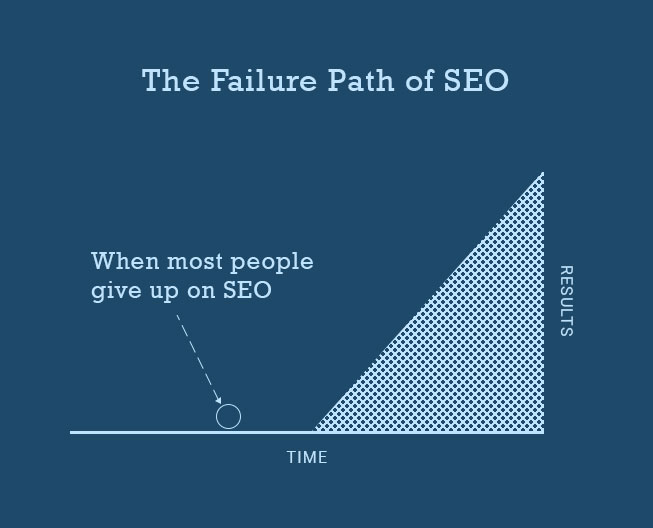
SEO is not a one-time process but a long-term commitment that requires patience, diligence, and expertise.
The key lies in understanding the metrics that truly matter for your business and setting achievable goals that align with your revenue targets.
SEO is worth it because–
- Organic traffic generated through SEO is cost-effective and high-quality. Because it targets users searching for specific keywords related to your product or service, organic traffic converts into leads and sales.
- Unlike paid ads, which disappear once you stop paying them, SEO organically helps you rank higher in search engine results pages (SERPs).
- SEO helps your business build brand credibility and authority. When your website appears on the top of SERPs, people perceive it as a trustworthy and authoritative source of information. This credibility helps you establish a positive brand image and attract more customers.
- By investing in SEO, you can compete with bigger brands and reach a wider audience.
- While PPC (pay-per-click) advertising can be expensive, SEO is affordable. Once you have optimized your website for SEO, you won’t need to pay as much as you did initially to maintain your ranking, unlike other forms of digital marketing.
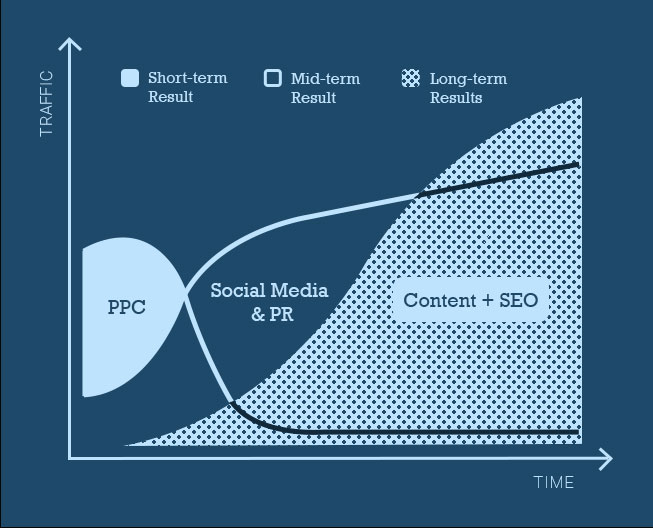
Identifying True & False Signs Of SEO Success
True Signs of SEO Success–
- Consistent increase in organic search traffic over time, accompanied by higher engagement rates and conversions
Organic traffic is visitors who land on your site through search engines without clicking on paid ads. If there is a consistent increase in organic traffic, it’s a true sign that your SEO strategies are paying off.
This trend indicates that your SEO strategy effectively targets the right audiences and drives more qualified traffic to your site.
- Improved Rankings
If your website’s ranking on search engine result pages (SERPs) has improved significantly over time, it’s a good sign that your SEO strategies are working. However, tracking multiple keywords and phrases is crucial to understand overall performance accurately.
- Increased Search Engine Visibility
SEO aims to improve a business’s visibility on search engines. If your web pages appear in more search results than before, it’s a positive indication.
- Enhanced User Experience
SEO is not just about optimizing search engine content but also about delivering a better user experience. If your website’s design, navigation, and functionality have improved, it’s a good sign that SEO efforts are making a difference.
False Signs of SEO Success–
- The sudden spike in website traffic
A sudden spike in website traffic doesn’t result in meaningful engagement or conversions. While increased traffic can be a positive indicator of SEO success, it’s essential to look closely at the traffic’s source and visitors’ actions once they reach your site.
- High Bounce Rates
A high bounce rate indicates visitors leave your website after viewing only one page. While analyzing the root cause of high bounce rates is essential, it’s not necessarily a negative SEO signal.
- Fluctuating Rankings
Search engine algorithms are constantly evolving, and rankings can fluctuate. If your rankings show variations, it’s not necessarily a sign of SEO failure.
- Social Media Metrics
SEO success indicators include social media signals such as likes, shares, and followers. While they may be beneficial for driving traffic, they sometimes translate to improved search rankings.
Measuring Your SEO Efforts and Return on Investment
SEO requires more than just investing. Measuring your SEO efforts to understand their impact and return on investment (ROI) is crucial. However, to accurately measure your SEO success, you need to consider several factors.
-
Analyzing Search Volume and Search Intent
Before optimizing your website, you should analyze your targeted keywords’ search volume and intent. This process will help you understand the types of content your target audience is searching for and the keywords they use. With this information, you can create relevant content that meets their needs and ranks higher in search results.
-
Calculating Conversion Rate and Organic Revenue
The conversion rate denotes the percentage of visitors who take the desired action, such as purchasing or filling out a form. Calculating your conversion rate and organic revenue will help you determine the effectiveness of your SEO strategy. Knowing the numbers, you can adjust your strategy to increase the conversion rate and earn more organic revenue.
-
Using Google Analytics to Track Organic Searches, Visits, and Potential Customers
Google Analytics is an excellent tool for tracking organic search visits, conversions, and potential customers. By analyzing the data, you can: identify trends, understand user behavior, improve user experience, and adjust your SEO strategy accordingly.
-
Evaluating the Cost vs. Benefit of an SEO Investment
It’s essential to evaluate the cost vs. benefit of an SEO investment. While SEO takes time and effort, you should see a positive ROI within a reasonable time frame. Identify the cost of your SEO investment, including internal costs such as–
- Labor or outsourcing costs for hiring an expert,
- Agency fees,
- Tools, and
- Resources.
Understanding the total SEO investment will give you an idea of the cost-benefit ratio and help you decide if a particular strategy is worth investing in.
Final Thoughts
SEO is not just a strategy to boost rankings but a long-term investment that can lead to lucrative returns. When done right, it can bring in steady traffic and qualified leads that convert into customers, resulting in increased revenue for your business.
By tracking your SEO ROI, you can gauge the effectiveness of your efforts and adjust your strategy accordingly, ultimately leading to even higher returns over time.
SEO is necessary for businesses that want to maximize online presence and achieve sustainable, long-term growth.
About Outpace
Measuring your SEO ROI can be complex and challenging, especially for those new to the SEO world. So, it’s essential to partner with an experienced and reputable SEO agency that can provide powerful insights into your SEO ROI and help optimize your long-term revenue.
We, Outpace SEO, an Oklahoma-based SEO agency, look at factors such as the following that can impact your SEO ROI–
- Organic Traffic,
- Keyword Rankings,
- Conversion Rates, and more!
Google has 200 metrics that help in ranking to generate traffic and revenue. And our expertise lies in playing by the book!
Remember: Your business is not seasonality prone in terms of traffic; every business has to face it. It’s not your fault or your SEO agency or even Google’s!
Moreover, the focus of every business should be to make the most out of the remaining time, and we are here to help with actionable plans and achievable goals & targets.
Don’t be part of the 96% of lower-ranking websites with almost zero SEO ROI.
Take advantage of the power of organic search results and watch your online presence soar with Outpace.
FAQs On SEO ROI
The ROI of SEO refers to the gains generated by organic traffic outpace the cost of implementation. Considering several factors, such as budget, competition, and the length of the SEO campaign, businesses can expect an ROI of anywhere from 3x to 10x or more. The ROI of SEO can continue to grow over time as the effects of optimization compound.
Yes, SEO has a high ROI. According to a study by Conductor, organic search accounts for an average of 53% of website traffic. Investing in SEO can lead to higher conversions and revenue, with companies seeing an average ROI of $2.75 per dollar spent on SEO.
You can demonstrate SEO ROI by calculating the return on investment from organic search traffic to your website.
Use the formula:
(Revenue Earned from Organic Traffic – Cost of SEO) / Cost of SEO
Additionally, track key performance indicators such as rankings, click-through rates, and conversion rates to show the effectiveness of your SEO strategy.
The formula for calculating SEO ROI is (Investment Gain – Cost of Investment) / Cost of Investment. To get this data in Google Analytics, you must set up conversion tracking and assign a monetary value to each goal or conversion.



